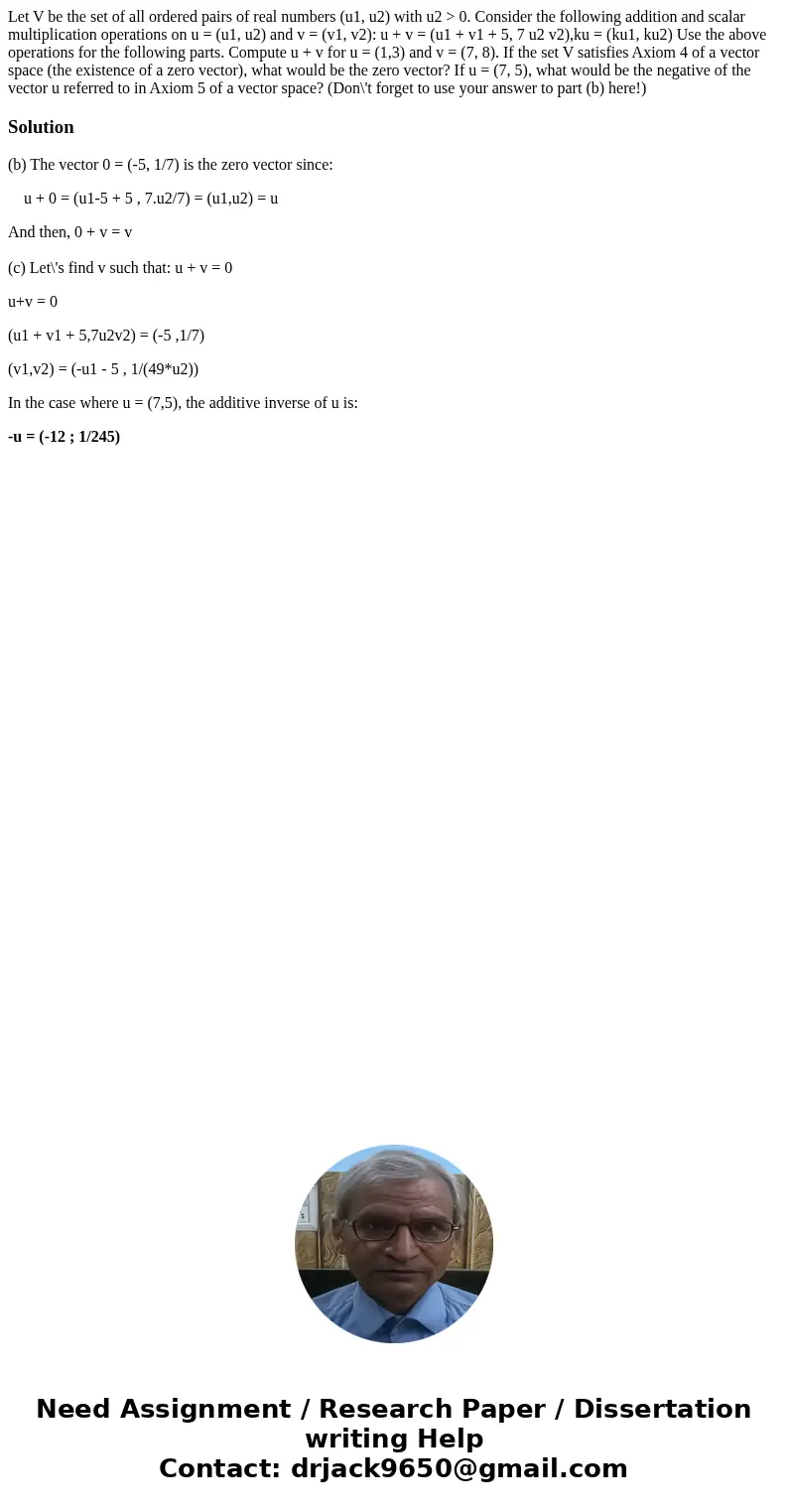Let V be the set of all ordered pairs of real numbers u1 u2
Let V be the set of all ordered pairs of real numbers (u1, u2) with u2 > 0. Consider the following addition and scalar multiplication operations on u = (u1, u2) and v = (v1, v2): u + v = (u1 + v1 + 5, 7 u2 v2),ku = (ku1, ku2) Use the above operations for the following parts. Compute u + v for u = (1,3) and v = (7, 8). If the set V satisfies Axiom 4 of a vector space (the existence of a zero vector), what would be the zero vector? If u = (7, 5), what would be the negative of the vector u referred to in Axiom 5 of a vector space? (Don\'t forget to use your answer to part (b) here!)
Solution
(b) The vector 0 = (-5, 1/7) is the zero vector since:
u + 0 = (u1-5 + 5 , 7.u2/7) = (u1,u2) = u
And then, 0 + v = v
(c) Let\'s find v such that: u + v = 0
u+v = 0
(u1 + v1 + 5,7u2v2) = (-5 ,1/7)
(v1,v2) = (-u1 - 5 , 1/(49*u2))
In the case where u = (7,5), the additive inverse of u is:
-u = (-12 ; 1/245)

 Homework Sourse
Homework Sourse